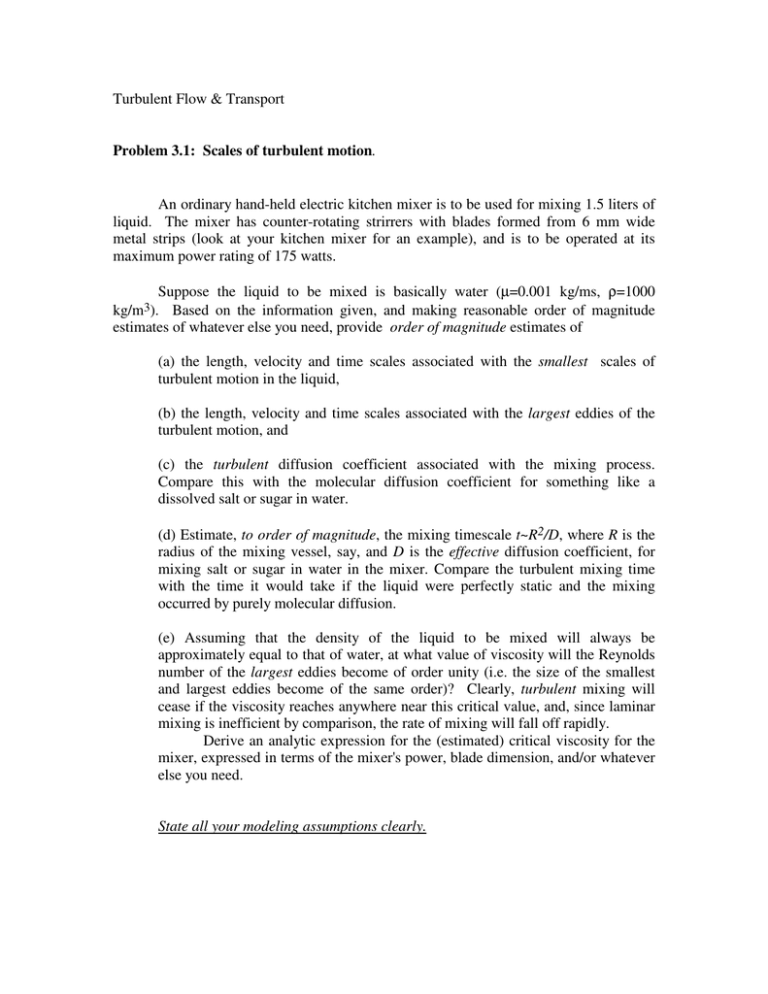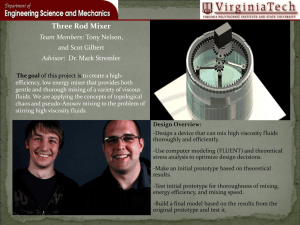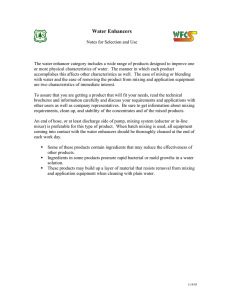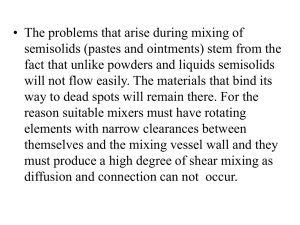Document 13607202
advertisement

Turbulent Flow & Transport Problem 3.1: Scales of turbulent motion. An ordinary hand-held electric kitchen mixer is to be used for mixing 1.5 liters of liquid. The mixer has counter-rotating strirrers with blades formed from 6 mm wide metal strips (look at your kitchen mixer for an example), and is to be operated at its maximum power rating of 175 watts. Suppose the liquid to be mixed is basically water (µ=0.001 kg/ms, ρ=1000 kg/m3). Based on the information given, and making reasonable order of magnitude estimates of whatever else you need, provide order of magnitude estimates of (a) the length, velocity and time scales associated with the smallest scales of turbulent motion in the liquid, (b) the length, velocity and time scales associated with the largest eddies of the turbulent motion, and (c) the turbulent diffusion coefficient associated with the mixing process. Compare this with the molecular diffusion coefficient for something like a dissolved salt or sugar in water. (d) Estimate, to order of magnitude, the mixing timescale t~R2/D, where R is the radius of the mixing vessel, say, and D is the effective diffusion coefficient, for mixing salt or sugar in water in the mixer. Compare the turbulent mixing time with the time it would take if the liquid were perfectly static and the mixing occurred by purely molecular diffusion. (e) Assuming that the density of the liquid to be mixed will always be approximately equal to that of water, at what value of viscosity will the Reynolds number of the largest eddies become of order unity (i.e. the size of the smallest and largest eddies become of the same order)? Clearly, turbulent mixing will cease if the viscosity reaches anywhere near this critical value, and, since laminar mixing is inefficient by comparison, the rate of mixing will fall off rapidly. Derive an analytic expression for the (estimated) critical viscosity for the mixer, expressed in terms of the mixer's power, blade dimension, and/or whatever else you need. State all your modeling assumptions clearly.


